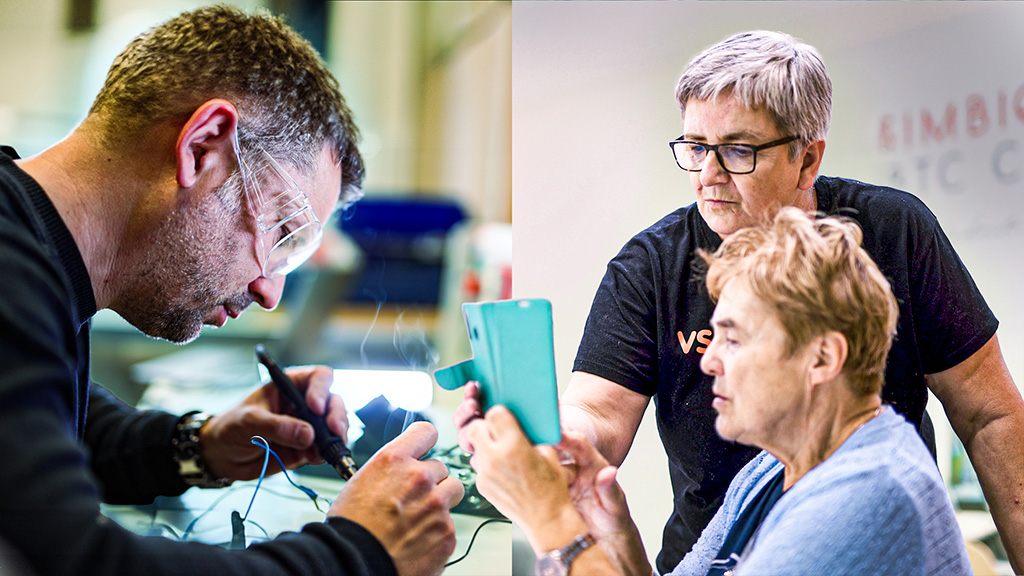In my latest Harvard Business Review article, “The New Corporate Garage,” I argue that we’re transitioning into a new age where forward-thinking corporations that blend entrepreneurial behaviors with existing capabilities can have massive impact. The article is a call to arms for corporate innovators to seize the opportunities that only a big company can realize and to corporate leaders to ensure they create a culture conducive to transformational innovation and impact.
Many still see large companies as the problem, not the solution. Hot new startups show up and are lauded daily. So it might seem counterintuitive to suggest that large companies are where the innovation action will be. But the shift has already begun. For example, one story in the article describes how Swiss agrichemical giant Syngenta leveraged existing crop protection products and deep relationships with retailers to develop a version of the “sachet” model popularized by consumer packaged goods companies. The uwezo program allows it to bring modern technologies to 4 million smallholders in Kenya.
The Syngenta story, like the other three case studies in the article, had a clear protagonist, a “corporate catalyst”: someone who marshaled resources both inside and outside the company and built organizational support for the disruptive growth strategy.
Companies looking for their own corporate catalysts should ask three critical questions.
1. Do we take advantage of our global scale in the quest to identify up and coming talent?
Global giants have a hidden advantage in the battle to snag up-and-coming catalysts. While entrepreneurialism is growing in cities like Shanghai, Sao Paolo, and Jakarta, the scales remain tilted much more toward multinationals in these cities and indeed in many emerging markets.
Consider IBM. The company has more than 400,000 employees spread around the world. It has the resources to search for and assimilate the world’s best talent and further shape and refine it. A two-person Silicon Valley startup simply doesn’t have that ability.
Beyond sourcing talent globally, IBM works to spread that talent throughout its organization. During a recent panel discussion, “Does Asia have the talent to lead innovation in the 21st century?”, IBM Talent VP Diane Gherson told me how the company is shifting from historical models where a handful of senior executives would serve lengthy expatriate assignments to new models featuring shorter assignments for younger employees. It’s just one way that “Big Blue” makes sure it takes full advantage of its global scale.
2. Does our internal environment support the work done by potential catalysts?
Companies have to make sure they don’t end up attracting and training people who go and join up-and-coming attackers. One component is a culture of innovation, where people follow behaviors consistent with successful innovation without having to think about it or fight against corporate systems. Companies should pay particular attention to the degree to which they support the common behaviors that allow catalysts to have impact. In general, catalysts:
- Approach innovation holistically, thinking not just about features and functions, but about new ways to raise market awareness, distribute, finance, and even organize.
- Activate resources beyond their immediate control. As Colin Harrison from IBM (who helped catalyze IBM’s Smarter Cities initiative) noted, “I work with several hundred people, but no one reports to me. In a company of this size, if you are persistent enough, you can find people with all kinds of skills.”
- Engage external partners to amplify their corporate impact.
Organizations with cultures that don’t support these behaviors are more likely to snuff the potential of their catalysts.
3. Are we as innovative in our approach to talent identification and development as we are in our efforts to develop new products and services?
Big companies should use innovative means to find and nurture future catalysts. For example, during that same panel discussion, Kari Reston from Standard Chartered described a number of innovative approaches that the bank has followed to attract young talent. Last year it held a contest to find the “world’s coolest intern” who Tweeted and blogged about the company’s launch of its mobile banking tool, Breeze.
Global companies should take advantage of the fact that they can run these kinds of targeted experiments, and then ensure they have mechanisms to replicate and transfer high-impact approaches.
Innovation is, and always will be, an intensely human activity. Global companies that harness their immense resources to cultivate a unique ability to attract, retain, and develop the catalysts who can release and amplify historically constrained innovation energy will receive innovation dividends for years to come.
Originally posted here: How Big Companies Can Save Innovation
















